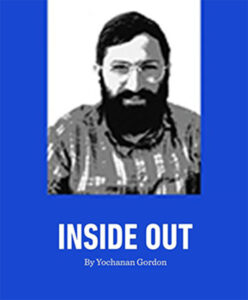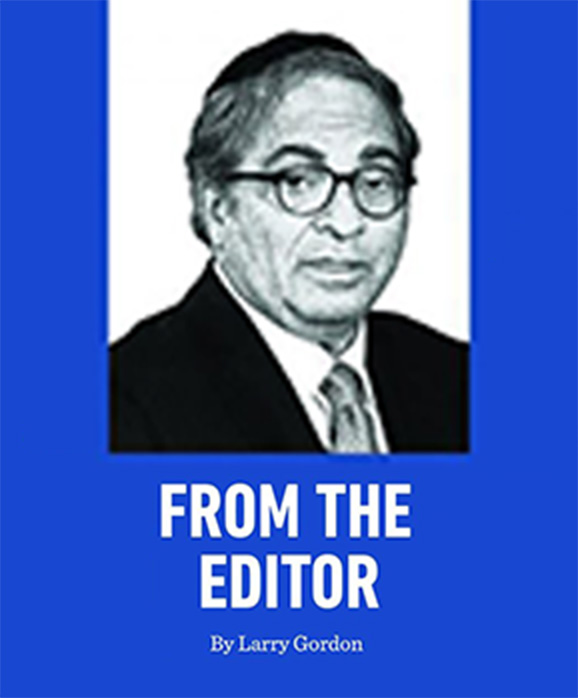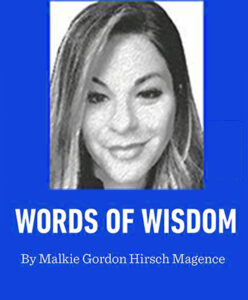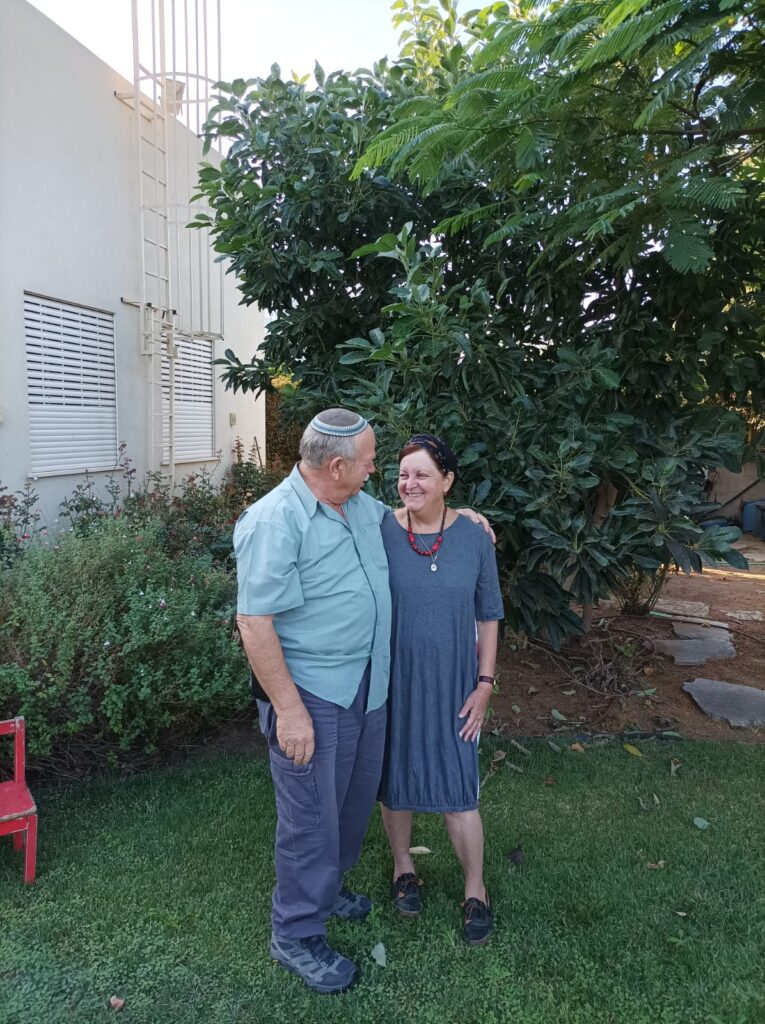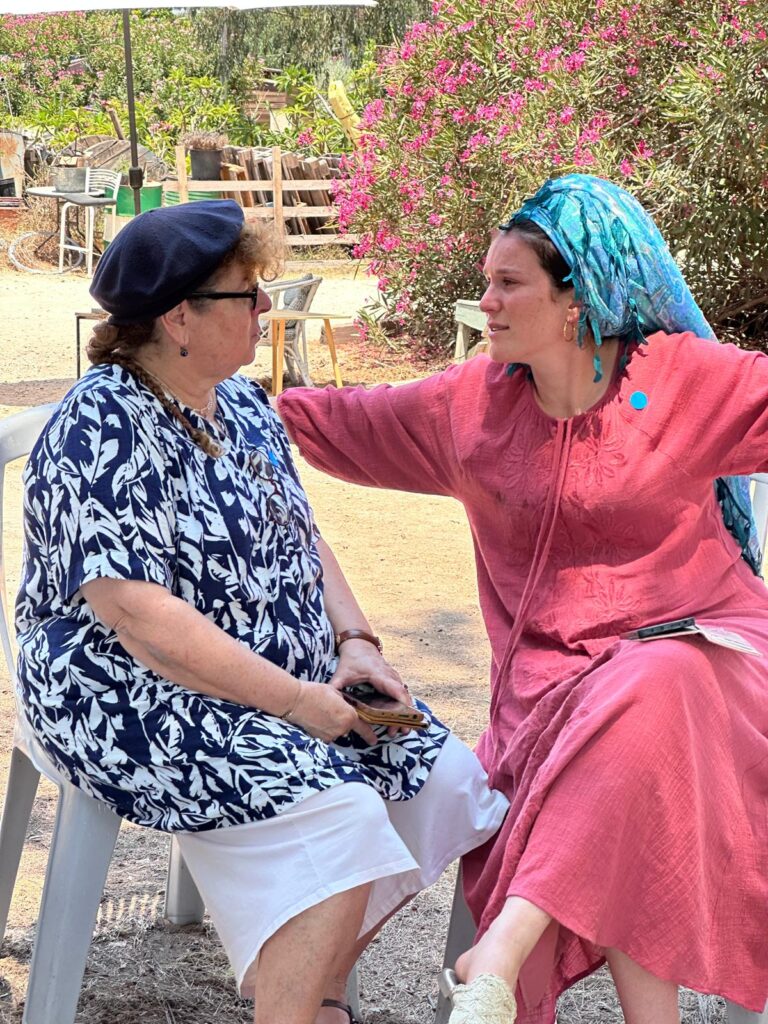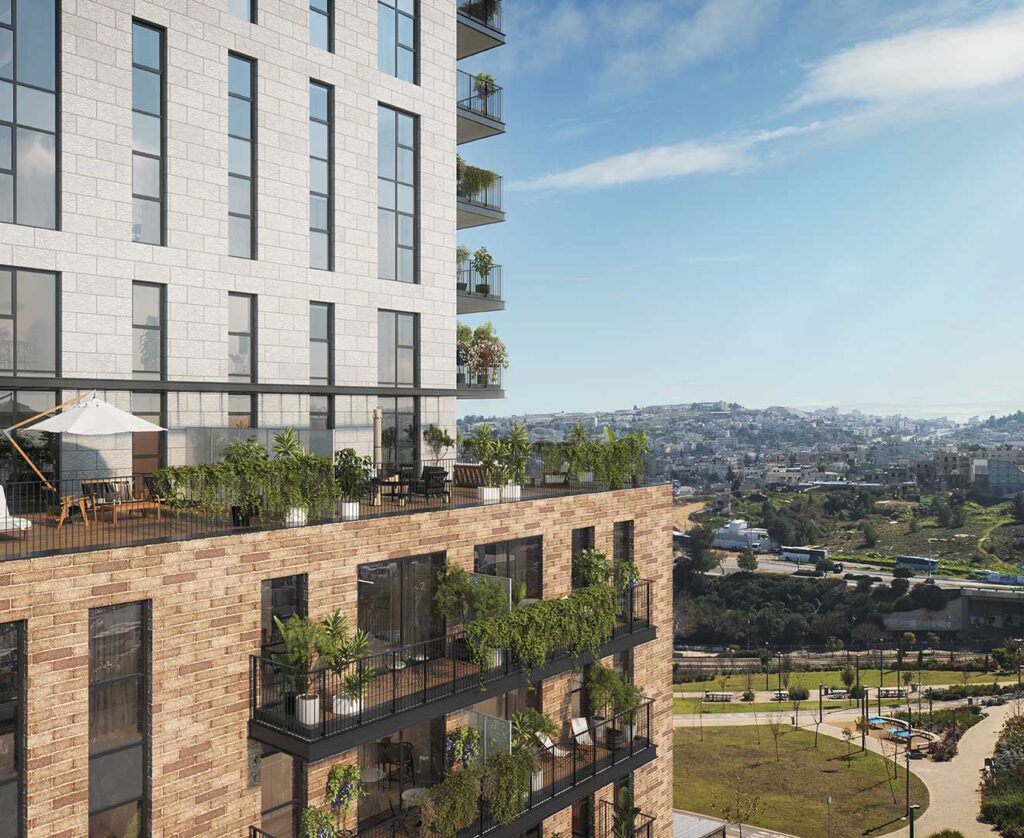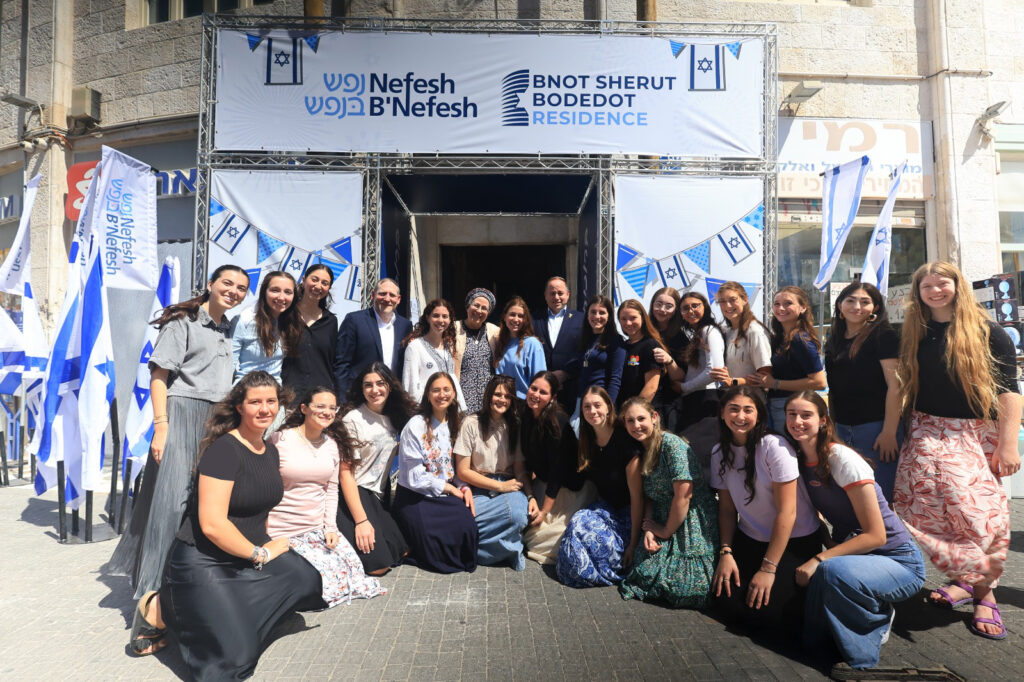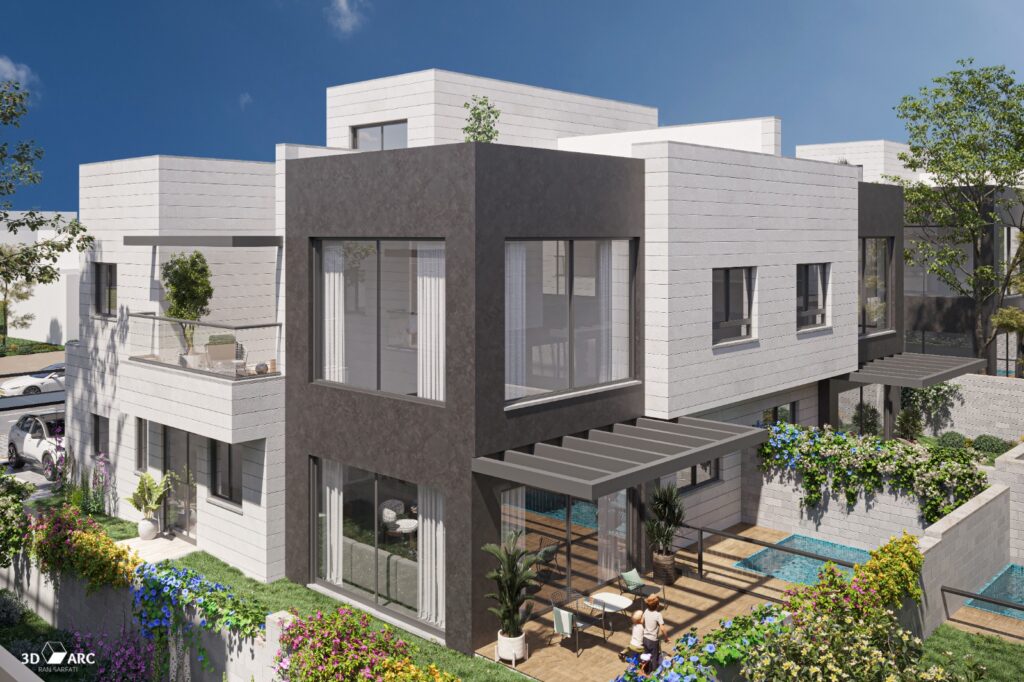From Gush Katif To Rebuilt Ganei Tal And The Moringa Forest

By Moti and Hana Sender, as told to Toby Klein Greenwald
Part I
I originally met Moti and Hana because they live in Ganei Tal, the same community as the in-laws of two of our daughters. Their story of rebirth is extraordinary. –TKG
Moti: We came to Gush Katif in 1978 from Petah Tikva. I worked at the Mizrachi Bank.
Hana: I was studying Educational Counseling and Psychology at Bar Ilan.
Moti: In early August 1978, they invited the men of the families who planned on eventually settling in Ganei Tal. Every Sunday we arrived at Kfar Darom for two months. They got us used to working [in agriculture] in Netzer Hazani, the first moshav in Gush Katif. Before Rosh Hashanah we moved to Moshav Katif, where we stayed for a year, as Ganei Tal wasn’t built yet. In the summer of 1979, Ganei Tal was established; then we moved there.
Hana: We were always looking for a place that wasn’t a city. We wanted a moshav or something like that, and friends told us about the group organizing, and we joined them.
You asked about our family history. My father is from Poland and my mother is from Munkács, from Czechoslovakia. She was in Auschwitz, and she went through all the horror and then came to Israel. My father immigrated in 1924, when he was three months old, with my grandparents’ family. They came to Kfar Hassidim at first, and from there they moved to B’nai Brak, and they were among the founders of B’nai Brak, when B’nai Brak looked like Gush Katif when we arrived there—sand, sand, sand. Then we moved to Moshav Meron in the Galil. And that’s where I grew up and lived until I got married. I was on the staff that founded the Ulpana in Meron.
Moti: My parents were born in Jerusalem. I’m an eighth generation Jerusalemite. But I wasn’t born in Jerusalem, because in 1948 my parents saw that there was nothing to eat in Jerusalem, so they moved to Ekron, to Rehovot, to Beer Sheva, to all kinds of places in Israel.
In Moshav Katif, in sets of two, we set up greenhouses, we grew flowers, and they taught us what we had to do. A year later, we had to dismantle all the greenhouses that we built in Moshav Katif and rebuild them in Ganei Tal. We grew flowers, and then switched sometimes to vegetables, like peppers, and we slowly started specializing in houseplants.
Hana: I also worked in agriculture, and for a number of years I was the community secretary, and later I directed a nonprofit institute in Neve Dekalim—The Katif Center for Research and Development of the Deserts of the Seashore. I was there up until the last day before the expulsion, but I also stayed involved in our farm, because I love agriculture.
Moti: In the army, I was in a founding group of a Nahal brigade, in a group that they called Nachshon, in Kibbutz Ein Tzurim. We established a Nahal site in Yamit that was called Nahal Dekelim at the time, then they changed the name to Nahal Dikla, then it became one of the [civilian] settlements, until they evacuated Yamit.
I was privileged to be in founding groups that built three settlements in the Land of Israel. First Dikla, then Moshav Ganei Tal, and in 2005 we left, and slowly we built the new Ganei Tal in the Land of Israel.
We had eight family members deployed in this current war—sons, sons-in-law and grandsons. We have three grandsons in the armored brigade, who were in and out. We have three children who are lieutenant colonels in the army. If I was “only” a Nahal soldier, they go beyond. The grandchildren served in Gaza. Our son-in-law was also there part of the time, in and out. And then one is in the air above even now, who has very important tasks. Another one is involved in all the developments of the Merkava tank. One returned to the Home Front Command.
Hana: The three grandchildren [who were in this war] were born in Gush Katif and lived in Neve Dekalim. Those three were small during the expulsion, and they returned to fight in Gaza and in the area that had been Gush Katif.
Moti: One day someone—not the grandchildren—they sent us a photo of a third of a sign that they found among the sands of Gaza, that said “Sender Plant Nursery.” It was as if a sword has entered our stomach and made a kvetch… wow.
Hana: It was very emotional, my whole body shivered, it was something from there…
{After the Expulsion
Moti: After the expulsion, in 2005, we were sent to Kibbutz Hafetz Haim, where we stayed for three months. I brought some of my agricultural equipment to a moshav nearby. I thought maybe we’ll go back to agriculture. Meanwhile, [until we received land of our own] I was sure that at least one or two people would say, Moti, we have work for you. But there was no one.
So I continued to work on our Katifnet website, and was very busy. Half an hour after we arrived at Hafez Haim, I had already reported on what was happening there, so it was never boring. Our son Elhanan built the site; now he works as an army officer, and he doesn’t even have time to look at it.
It was hacked and taken down but he has the material and it’s important to preserve as a historical site; for that we need someone who would finance it.
Almost 20 years ago Hana and I were invited to speak at the University of Ariel. They showed our website, Katifnet, as an example of a community site that gave families and others information and news, often that did not appear anywhere else.
I also continued my photography. I have about 40,000–50,000 photos on a hard disk from our years in Gush Katif. So, when something happens, or there is an event, I remember the stories, create a link, and I upload photos from back then.
How did we get by between 2005 and 2018? With G-d’s help, He made heaven and earth–Ezri meim Hashem oseh shamayim v’aretz.
We opened our savings accounts. We don’t have a pension. People said we were crazy to build new greenhouses, but I told them, I prefer to put money on pieces of iron [building greenhouses], than to give it to a psychiatrist. So, yes, it’s very hard work. I get up at 5 a.m. and we’re here until 6 in the evening.
Hana: When we decided to return to agriculture, we looked for a place in Hafetz Haim, because we still hadn’t received our own area. We were in Moshav Arugot for a year and then Hafez Haim gave us some land.
We built the greenhouses there, and we started to grow the house plants that we grew in the Gush. We thought it would be like this for a year or two, but it was seven years.
We only received our own land in 2014, nine years after the expulsion. And then, for the third time, we built the agricultural farm. It was a very big risk, but that’s what we did. And we went back to growing house plants. n
To be continued…
The writer has close and extended family who lived in and were uprooted from, Gush Katif. She is an award-winning journalist and theater director. A shorter version of this article originally appeared in Jewish Action (Summer 2025).
